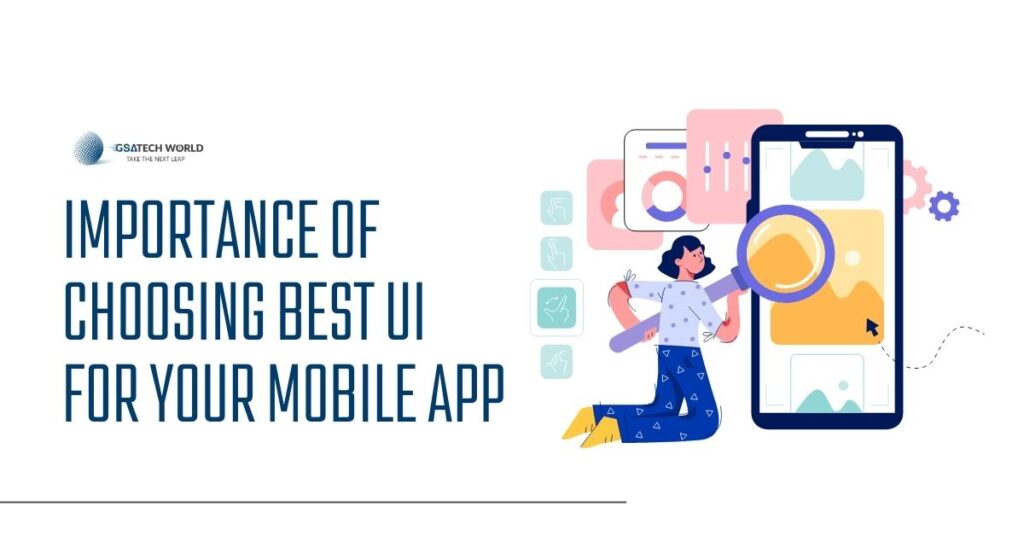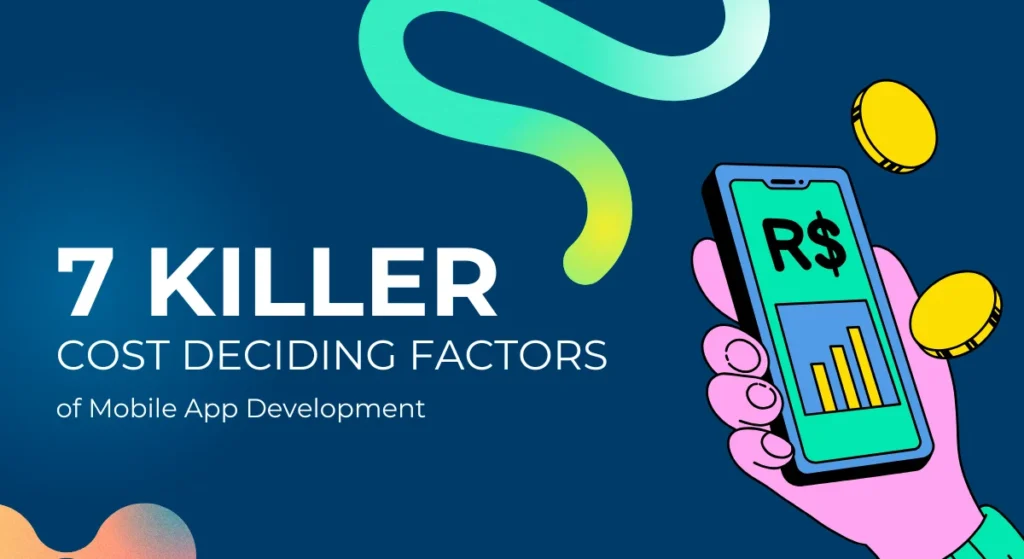Table of Contents
What Is User Interface?
The User Interface (UI) is a key component of success in the dynamic world of mobile app development. An app’s success or failure can often be determined by how well the user interface is designed. This in-depth manual covers the procedures to emphasise the significance of selecting the finest user interface (UI) for your mobile application.
What Does UI Design Mean For A Mobile App?
The meaning of the acronym UI is “user interface.” It is the method by which users interact with all mobile applications. The objectives of user interface design include simple, enjoyable, and productive user interactions with mobile apps. A UI is any device used in IT that enables users to interact with monitors, screens, or mobile devices. The primary goal of mobile app UI concepts is to provide the best interaction possible. Learn more about mobile app development and its stages!
Steps that are required to follow UI Process:
1. Recognizing User Needs And Expectations
User-centric design starts with a thorough comprehension of the target market. Become well-versed in user preferences, behaviors, and pain spots through thorough study. Use techniques like user testing, interviews, and surveys to learn what people want from the UI of the app.
2. Creating Detailed User Personas
Develop user personas in detail using user insights. These personas stand in for several subgroups of your target market, each with its own demands and interests. These personas act as compass points for the UI design process.
3. Establishing Clearly Defined UI Objectives
Every element of UI design should be in line with the overall objectives and user expectations of the app. Establish specific goals for the UI and make sure they can be measured and tracked. Create key performance indicators (KPIs) to assess the UI design’s efficacy.
4. Researching Industry And Design Trends
Keep up with the most recent design fads and business norms that apply to mobile app development. Examine popular apps in your niche to find ideas and best practices that appeal to your intended audience.
5. Create Wireframes And Prototypes
Use wireframes and prototypes to visualize the design and functionality of the app’s user interface. This process enables early-stage UI design testing and validation. You may get insightful feedback and make changes before the development phase by making interactive mockups.
6. Giving User-Friendly Navigation Priority
User experience is built on effective navigation. Create a user-friendly flow that easily leads users through the app. Reduce the amount of steps needed to complete activities by making typical actions readily available.
7. Juggling Aesthetics And Functionality
The UI must carefully balance both aesthetic appeal and usability. To establish a unified and recognized UI, use consistent branding components like color schemes, typography, and logos. Put clarity first without sacrificing beauty.
8. Using Responsive Design
In a time with many different devices, responsiveness is crucial. Make sure the user interface can easily adjust to various screen sizes and orientations. This ensures that users will have a consistent and engaging experience across a variety of devices.
9. Accessibility And Inclusivity
A well-thought-out user interface (UI) design takes into account accessibility for all users, including those with disabilities. Include elements like high-contrast options, scalable fonts, and text-to-speech capabilities. To ensure inclusivity, check the user interface for compliance with accessibility requirements.
10. Usability Testing And Feedback Incorporation
Use usability app testing to put the UI to the test with actual users. Obtain opinions on the UI design, concentrating on the elements that need to be improved. Create an intuitive and user-friendly interface by iterating and refining based on user feedback.
11. Ongoing Evaluation And Monitoring
After launch, keep an eye on important user engagement metrics like bounce, retention, and conversion rates. Utilize analytics to determine how the UI affects the success of the app as a whole. Apply this information to future UI improvements.
Conclusion
In conclusion, the user interface of a mobile app is more than just a visual element; it serves as a portal to a successful, seamless user experience. By following these instructions, you can underline how crucial it is to pick the greatest user interface (UI) for your mobile application, which will ultimately result in a product that stands out and connects with people in a crowded digital market. Talk to our expert consultation.







